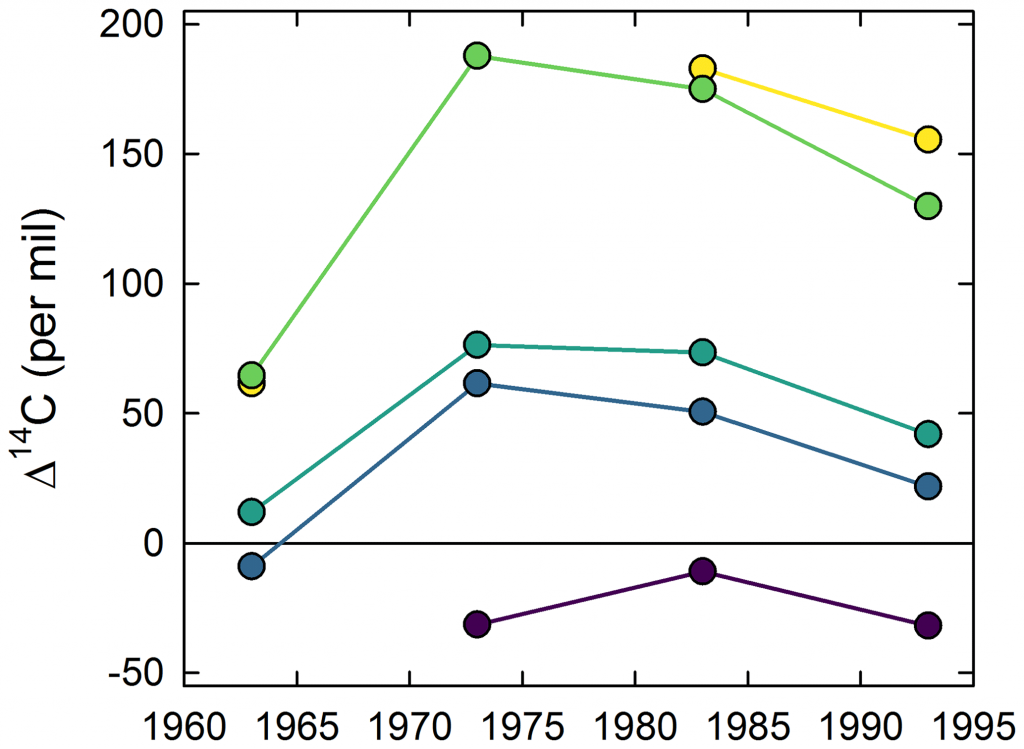News
Jonathan Sanderman’s work on soils using RPO
Jon Sanderman visited the lab in 2019 to use the RPO on a series of soil profiles sampled decadally since the 1960’s. Did you know that the RPO was originally called the dirt burner? His paper is now out: Ramped thermal analysis for isolating biologically meaningful soil organic matter fractions with distinct residence times
Read MoreNew publications from two former NOSAMS guest students
Jessie Pearl started as a MIT/WHOI joint program student under Jeff Donnelly and Kevin Anchukaitis. Jessie worked with NOSAMS to do help develop reconnaissance radiocarbon dating- a method to get quick radiocarbon results at a lower cost and at a reduced precision- for organic carbon samples. She finished her PhD at the University of Arizona…
Read MoreCOVID-19 Update
NOSAMS is open and operating with minimal staff while respecting conservative social distancing as outlined by the Commonwealth of Massachusetts and WHOI policies. We are accepting and processing samples and do not expect an increase in turnaround times as a result of COVID-19. We welcome questions or comments at nosams@whoi.edu.
Read MoreThe Atlantic highlights NOSAMS in an article about nuclear weapons testing
The Atlantic writer Carl Zimmer writes about the events that lead to the radiocarbon “bomb spike”, the lasting mark it has left in this world, and how scientists are studying it. The article features work from Researcher Mary Lardie Gaylord et al. and their work on radiocarbon dating tree rings on a European beech tree…
Read MoreUnderstanding the age structure and population dynamics of harvested fish is crucial for sustainability, especially in fisheries.
Alec Lackmann et al. report on the oldest freshwater teleosts: Bigmouth Buffalo Ictiobus cyprinellus sets freshwater teleost record as improved age analysis reveals centenarian longevity
Read MoreHurricane Clues from a Caribbean Blue Hole
Scientists look to sediment cores from Caicos Island to gain insights about a monster, modern-day hurricane. Read More…
Read MoreNOSAMS staff tag along WHOI’s Geodynamics Program
Research Assistants Lily Sanborn and Mary Lardie Gaylord joined the Geodynamics program to Newfoundland, Canada to learn more about North Atlantic Climate & Civilization. They and other students explored how changes in North Atlantic ocean circulation, considered by many as the major driver of global climate, had influenced human exploration and colonization. The study tour…
Read MoreWhy did an entire civilization vanish?
Four thousand years ago, the Harappan civilization thrived in what is now modern-day Pakistan. By 1800 BC their cities were abandoned. Now a team of scientists think they have discovered where they went. This video highlights the work of WHOI scientist Liviu Giosan and some members of NOSAMS (where his samples were analyzed). Video>> Why…
Read MoreWho is WHOI?
Who is WHOI? is a short video highlighting different scientists and answering what it means to work for WHOI. Look for NOSAMS staff throughout the film: 00:56 Kalina Gospodinova, 00:59 Josh Burton and Brett Longworth, 01:07 Josh Burton, 03:27 Josh Burton, 04:05 Anne Cruz.
Read MoreNOSAMS is on Twitter
Please follow the latest news and updates from our lab on Twitter: @NOSAMSLab
Read More
